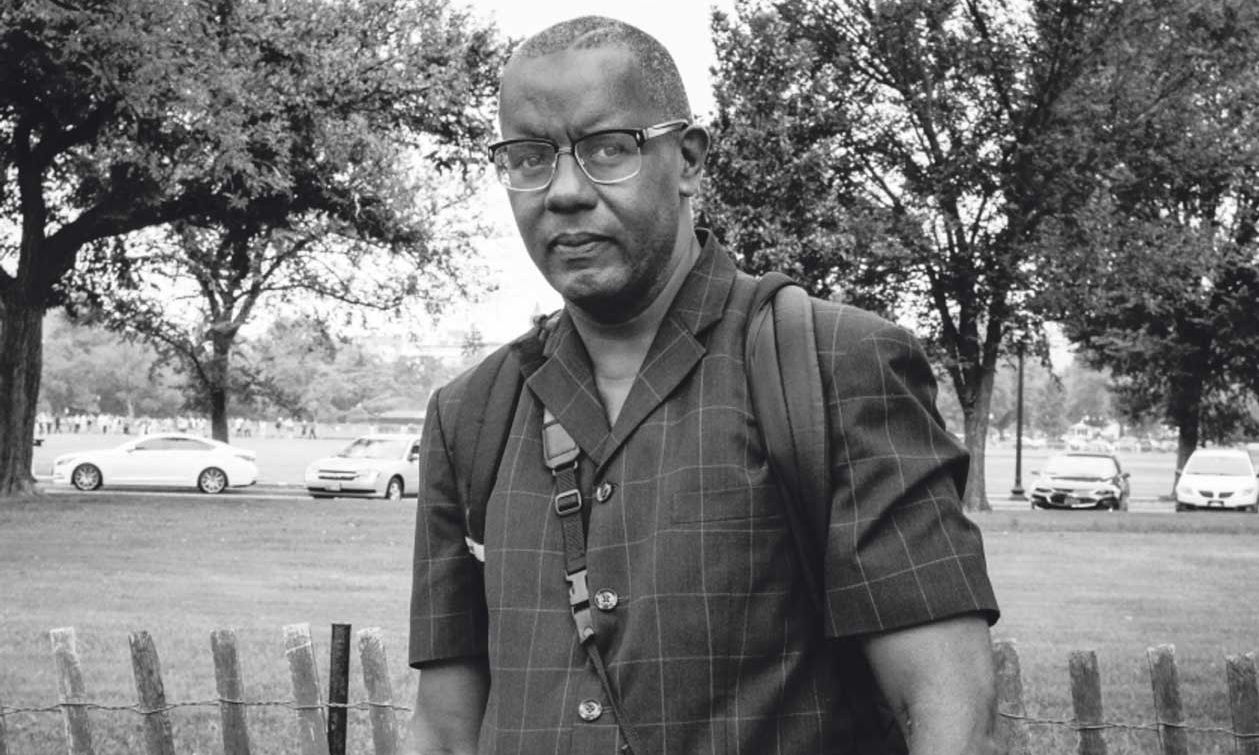Jamel Shabazz: “To have the ability to freeze time and motion to me is a phenomenal thing” Photo: Micheal McCoy
For Jamel Shabazz’s first institutional survey (until 4 September), the Bronx Museum of the Arts is showcasing more than 150 images shot by the prolific photographer, who dedicated decades to documenting his native Brooklyn. The son of a navy photographer who later supported his family by taking portraits and shooting weddings, Shabazz grew up in a home of cameras and photography books. As a young man he discovered he could use photography to celebrate his community and to form and sustain deep connections with those around him.
On the occasion of his exhibition, Shabazz reflects on how he came of age as a photographer, the 20 years he spent working as a prison guard at Rikers Island, New York City’s largest and most notorious jail complex, and how his work continues to touch the souls of a new generation.
The Art Newspaper: What drove you to start taking pictures?
Jamel Shabazz: My father was a professional photographer. He converted our small apartment in Brooklyn into a studio on the weekends and he would photograph family and friends. He would rearrange everything. He photographed weddings too. So I always grew up seeing camera equipment. He had a massive library of photography books too, and that intrigued me from early on. And we also had the family photo albums that were passed on from generation to generation.
Man and dog. Lower East Side, Manhattan (1980)
Courtesy of the artist
I often speak about one particular book that really changed my life when I was about eight years old: Black in White America by Leonard Freed [1969]. My father had this library, but this particular book sat on the coffee table and it was signed by Freed. This book was the first time I actually saw photographs outside of my Brooklyn community. Suddenly I was being introduced to places like Harlem or the segregated South, and I wasn’t really understanding what I was seeing but a lot of the pictures reminded me of myself. It felt like the book was introducing me to a world that I was about to embark on.
What was your approach like when you first started taking pictures?
My mother always had these cameras laying around with film in them, so I took a camera and I went up to my local junior high school and I started photographing my friends. I didn’t quite understand light, but I knew how to compose images from having looked at photographs from so early on. We would all chip in then get the film developed at the local drugstore. There was something magical about that camera. When I picked it up and looked through its viewfinder, it opened up a part of my mind that I didn’t know existed.
Then I went to the army when I was 17 and came back when I was 20, in 1980. My father was teaching me photography and my early photographs were, in his opinion, very depressing. I started to photograph poverty, homelessness, despair, alcoholism. I was curious. I saw the billions of dollars generated towards the military budget, then I’m coming home to America and I’m seeing these social conditions that bother me. My father couldn’t understand why I would photograph these conditions, so I redirected my energy, subconsciously, and I started to capture joy, love and friendship.
I began to use my camera to talk to people about life, goals and objectives. I was looking for joy and friendship, but beyond photography I was really looking to have conversations with people, and the photographs became evidence of these conversations. But I never stopped with my personal project to document social conditions too.
Embracing the Feeling. Flatbush, Brooklyn (1982). When Shabazz first started photographing scenes and people in Brooklyn, his father said his images were “depressing”, so he “redirected his energy” to “capture joy, love and friendship”
Courtesy of the artist
I think that, in your best images, all of that is in there. There’s the sadness as well as the love and joy, and they’re coexisting in a single image.
When I look at my negatives, it’s all there. In the contact sheets, it’s a combination. In every situation, I look for the joy, but I cannot overlook the social conditions. In my contact sheets going back to the 1980s, when you look at all of them, it’s a combination of both [sadness and joy]—it’s almost 50/50.
What do you think the future of photography is?
I think the future of photography is pretty much here. It’s funny—back in the 1980s I was trying to encourage people to get involved in it, but now everybody is embracing it. Now it’s just this global language that’s really bringing people from around the globe together as a world community. I can’t imagine it getting any better.
So much of it comes back to the personal connections for you.
I look at the camera as a compass and I feel that everybody I meet on this path of life is due to this compass. The friendships that have been developed over these interactions are phenomenal. I look at myself as an alchemist—to have the ability to freeze time and motion to me is a phenomenal thing. That’s how I look at it. To be able to see something that just touches your heart and to pick up that camera and capture that moment, to freeze it and then to throw it out and share it with the universe.
• Jamel Shabazz: Eyes on the Street, Bronx Museum of the Arts, until 4 September

